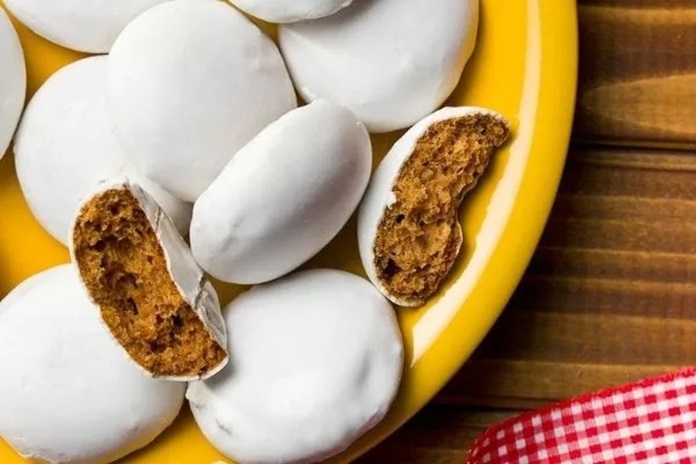Every year on December 23, people celebrate National Pfeffernusse Day. This day is dedicated to the flavorful cookie known as Pfeffernusse. Although many believe it originated in Germany, people also enjoy Pfeffernusse in Denmark and the Netherlands. Traditionally enjoyed during holiday celebrations like St. Nicholas Day and Christmas, National Pfeffernusse Day is the perfect occasion to bake your own Pfeffernusse and savor this festive treat with friends and family.
History of National Pfeffernusse Day
Pfeffernusse, also known as ‘pepernoten’ or peppernuts, has its roots in Central Europe. The recipe is attributed to Johann Fleischmann, a confectioner from Offenbach am Main, who is believed to have created it in 1753.
Since then, the cookie has gained widespread popularity and attracted the attention of notable figures, including the renowned composer Felix Mendelssohn.
Germany, Denmark, and the Netherlands are best known for their pfeffernusse, but in North America, ethnic Mennonites also have a fondness for this treat. Today, pfeffernusse is widely available and enjoyed around the world.
However, it is traditionally reserved for the holiday season, particularly in December, aligning with its origins as a treat for Saint Nicholas Day and Christmas.
The traditional pfeffernusse recipe includes nutmeg, cinnamon, cloves, ginger, black pepper, mace, anise, sugar, butter, eggs, and flour. Walnuts and almonds are often added for extra flavor. The mixture is leavened, kneaded, and baked, resulting in a hard cookie that softens over a few days.

Typically small and sometimes shaped like nuts, these cookies are called peppernuts. Today, bakers may modify the recipe, adding or omitting ingredients as desired. While pfeffernusse generally has a spicy flavor, you can adjust the spices to your taste. On National Pfeffernusse Day, homemade peppernuts are enjoyed by family and guests.
Timeline of National Pfeffernusse Day
| 1753 (Earliest Known Recipe) | Johann Fleischmann creates a recipe for pfeffernuss. |
| Around 1800 (Mennonites Bring the Recipe to the U.S.) | The German Mennonites settle in Northern America, bringing along the Pfeffernuss recipe. |
| 1820 (Brothers Grimm Mention the Treat) | Jacob Ludwig Karl Grimm and Wilhelm Carl Grimm warn their sister not to eat too much of it. |
| 1850 (Becomes Popular During the Christmas Season) | Pfeffernusse becomes a holiday treat during the feast of Sinterklaas and Christmas. |
5 Interesting Facts About Pfeffernusse
- Historical Roots: Pfeffernüsse, which means “pepper nuts” in German, are traditional Christmas cookies that date back to the Middle Ages. They were originally made with pepper and spices, which were considered luxury ingredients at the time.
- Spicy Twist: Despite their name, Pfeffernüsse aren’t typically very spicy today. The “pepper” in the name refers to the use of white pepper in the recipe, which adds a subtle warmth rather than a hot kick.
- Variety of Shapes: Pfeffernüsse are often shaped into small, round balls, but they can also come in other shapes, such as tiny squares or irregular lumps. The shape can vary depending on regional traditions.
- Sugar Coating: These cookies are usually coated in powdered sugar or a sugar glaze after baking. The sugar coating adds a sweet contrast to the spices and helps to balance the flavor.
- International Popularity: While Pfeffernüsse are most closely associated with German Christmas traditions, they are also enjoyed in other countries with German heritage, such as Denmark, the Netherlands, and the United States, particularly in areas with a strong German-American community.
Conclusion
National Pfeffernusse Day on December 23 is a delightful celebration of the traditional spiced cookie known as Pfeffernusse. This festive treat, which boasts roots in Central Europe, especially Germany, Denmark, and the Netherlands, has become a cherished holiday delicacy enjoyed around the world. With its origins tracing back to 1753, when Johann Fleischmann first crafted the recipe, Pfeffernusse has grown in popularity, captivating palates from the Middle Ages to today.
Whether you prefer to bake them yourself or enjoy them from a local bakery, Pfeffernusse cookies offer a unique blend of spices and sweetness that perfectly embodies the holiday spirit. Their diverse history, from being enjoyed by the Brothers Grimm to becoming a staple of Christmas celebrations, highlights the cookie’s enduring appeal. This December 23, take the opportunity to share Pfeffernusse with friends and family, savoring each bite of this aromatic, festive treat.
Frequently Ask Question
1. What is National Pfeffernusse Day?
National Pfeffernusse Day is celebrated annually on December 23. It honors Pfeffernusse, a spiced cookie traditionally enjoyed during holiday festivities such as St. Nicholas Day and Christmas.
2. What is Pfeffernusse?
Pfeffernusse, also known as “pepernoten” or peppernuts, is a traditional cookie with roots in Central Europe. It is typically made with a blend of spices including nutmeg, cinnamon, cloves, ginger, black pepper, mace, and anise. The cookie has a distinctive flavor and is often enjoyed during the holiday season.
3. Where did Pfeffernusse originate?
Pfeffernusse originated in Central Europe, particularly in Germany. The recipe is attributed to Johann Fleischmann, a confectioner from Offenbach am Main, who created it in 1753. The cookie is also popular in Denmark and the Netherlands.
4. Why is Pfeffernusse associated with the holiday season?
Pfeffernusse has historically been enjoyed during holiday celebrations like St. Nicholas Day and Christmas. Its spices and flavors make it a fitting treat for the festive season.
5. How is Pfeffernusse typically prepared?
Pfeffernusse is made from a mixture of spices, sugar, butter, eggs, and flour. Walnuts and almonds may be added for extra flavor. The dough is leavened, kneaded, and baked, resulting in a hard cookie that softens over a few days. The cookies are often coated in powdered sugar or a sugar glaze.
You may also like to read, National Maple Syrup Day – December 17, 2024
